Great Drip Campaigns & Where To Find Them

The term drip marketing refers to a series of manual or automated emails which are based on “triggers“, or specific conditions or actions performed by the user.
They are a set of emails that adapt to different marketing objectives and types of contact with customers or prospects. Drip campaigns let you reach out to leads in a manner which is consistent with actions carried out on your website or in emails.

From developing integrations to strategic support, from creating creative concepts to optimizing results.
You don’t have to deal with any specific code or have special technical knowledge to set up a drip campaign. Modern marketing automation systems make it possible to set one up in just a few steps. For example, MailUp provides a drag & drop system which can create a workflow with only a few simple drag and drop operations.
But let’s look at them in detail to learn about the advantages and uses of this fundamental marketing tool.
What is Drip Marketing?
Drip campaigns are simple and straightforward workflows in which a series of messages are automatically sent at a predefined rate. The distinctive element of a drip campaign is its graphic uniformity, which makes it possible to have a common, recognizable template for communications whose content varies according to the occasion and recipient.
We could call them email suites, or more unimaginatively email sets, which have the following as common denominators:
- Objectives: the goal we want to achieve with the communication
- Trigger: the conditions that trigger the personalization and sending of the email
- Design: the template can be the same for all messages, obviously with varying copy; the different texts must be designed and formulated for each contact phase, from those most distant to those closest to conversion.
Drip marketing means nothing more than providing the right information at the right time. If someone signs up for a newsletter, they will be sent a welcome email, and a few days later perhaps another email with the blog’s most read contents. If a user puts a product in his shopping cart but does not finalize the purchase, you can send him a drip campaign cart recovery email.
But how are these campaigns effective? According to the research done by the team at Emma, drip emails have double the opening rate of normal emails: this means that the likelihood of clicks within the email will also be much higher. The reason is simple: there is a greater level of personalization and profiling. In short, the emails are more relevant.
The benefits of a drip campaign
Timeliness
Drip campaigns receive their input precisely from users’ actions and behaviors. This means that they quickly and immediately respond to a recipient’s action or need.
Lead nurturing
Drip campaigns cultivate relationships to convert potential customers into buyers. They provide your sales team with a continuous supply of leads to work on, with the final goal of conversion.
Ease of automation
When they provide the best results, drip campaigns are automatic email flows. Automation saves time: in just a few minutes you can reach recipients with content that is consistent with the phase of the funnel they are in at that moment.
Now that we have explained what they are and why they’re fundamental for marketing strategies, let’s delve into their practical uses to understand the best opportunities for implementing drip campaigns.
The fields of application of drip campaigns
We have identified eight cases within customer relations where a drip campaign can be created.
Lead nurturing drip campaigns
Leads are contacts that have an intention to make a purchase, but are not yet completely convinced. In this case, the emails can have different objectives:
- Communicate advantages
- Focus on a particular function/offer/product
- Provide assistance, free trials and demonstrations
Think of services like Netflix or Spotify, which offer a free 30-day trial. During the trial, a drip campaign makes it possible to plan a set of emails with the aim of converting the trial user into a customer and subscriber.
- [1 week after trial activation]
Email to present the advantages of the complete service - [2 weeks after trial activation]
Feedback request + call to action email to activate the service - [3 weeks after trial activation]
Email offering a discount for service activation - [On the eve of the end of the trial]
Deadline notification + last subscription proposal email
These emails can be alternated with promotional emails that advertise products and services, thereby offering additional good reasons to make the purchase once the trial ends. Here’s how Netflix does it:
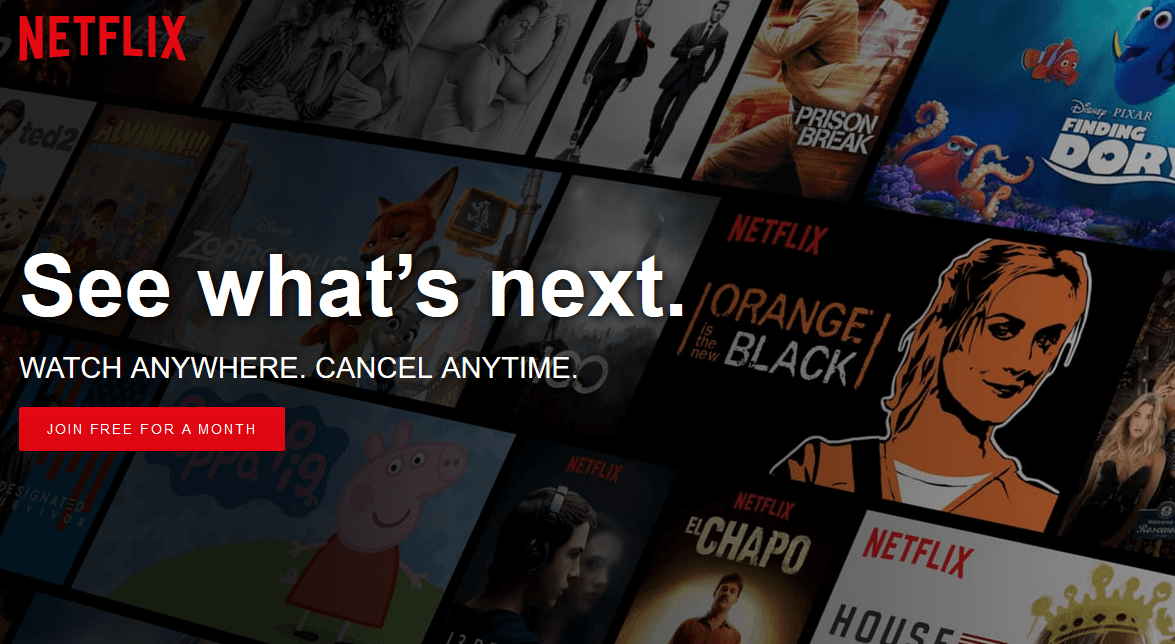


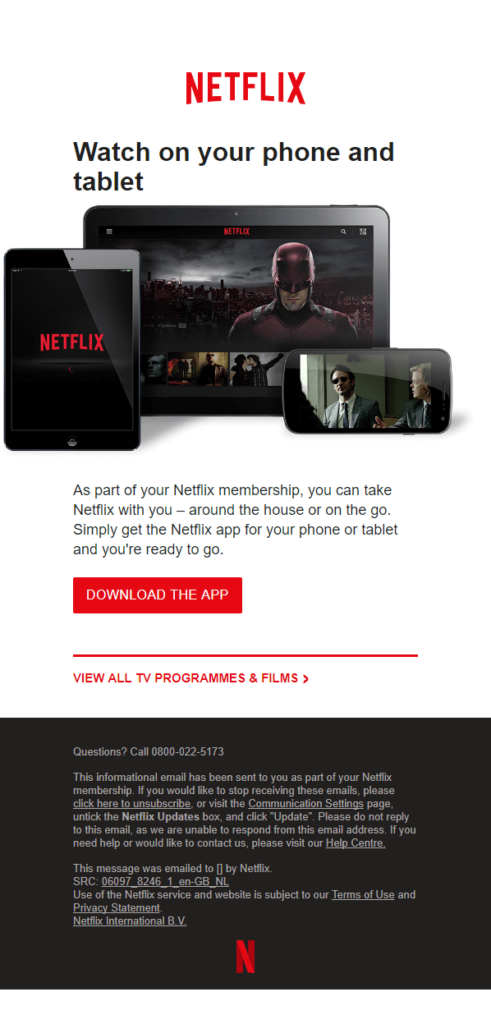
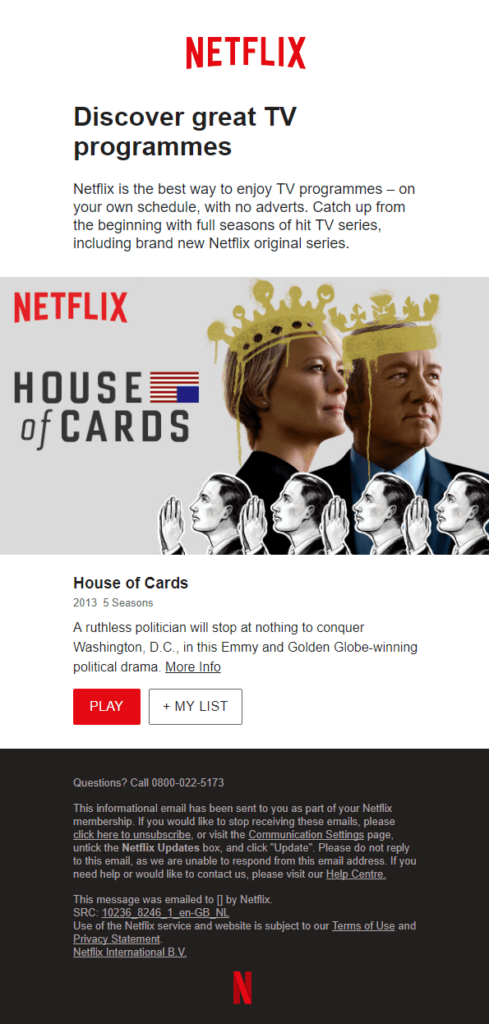
Welcome drip campaigns
You were successful in having users sign up for your newsletter, and now it’s time to welcome them.
Statistics confirm that users get a good feeling from welcome emails. The average open rate is 58.7%, compared to 15% for a regular email. In addition, if the email is instantaneous the open rate goes up to 88%.
There are many possibilities for setting up a welcome drip campaign. Here is a potential model:
- [Immediately]
Confirmation email for newsletter subscription - [After 2 days]
Select content and in-depth information - [After 2 weeks]
Request for feedback and other content

For example, from the moment of registration onwards, Slack guides the new user through the service’s features (the app, the ability to invite people, set up notifications, etc.)




Cart recovery drip campaign
How many times have you happened to put something in a shopping cart and then not actually purchased it? This is quite common. Shopify’s content manager Mark MacDonald said that 67.45% of carts are abandoned.
You can re-engage users and bring them to finalize the purchase with an automatic campaign. You can send emails which let the user know that the product is still available, offer limited time discounts, or even send them to a landing page explaining the benefits of one plan over another.
This is what Optin Monster does, but with an email which focuses more on text without relying on big graphic effects.

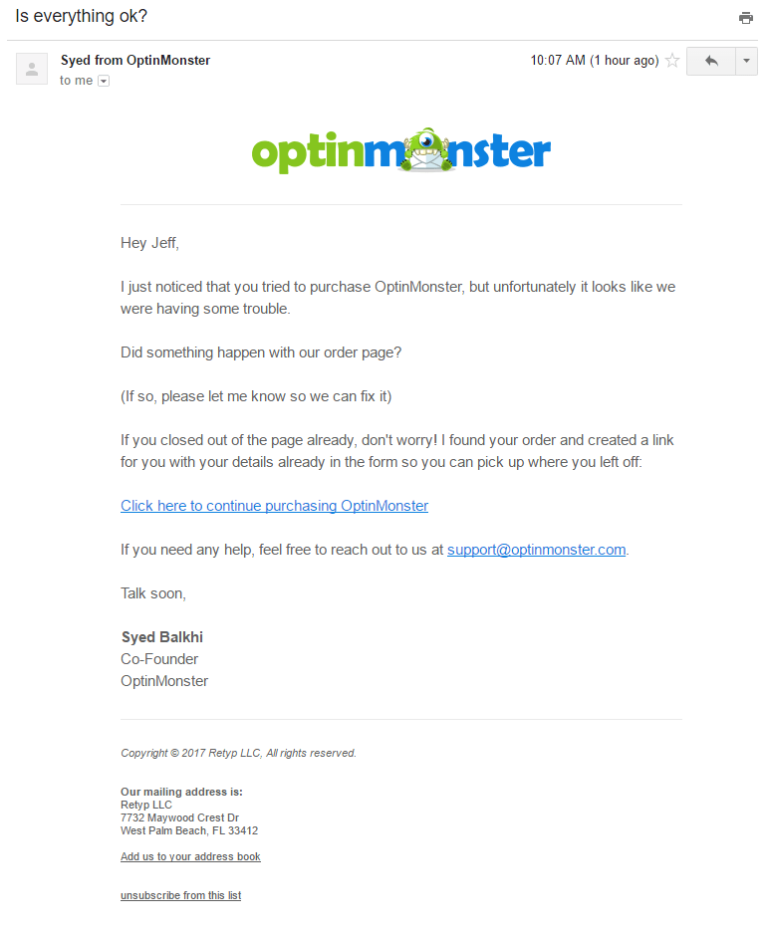


Renewal drip campaigns
If a renewal is automatic, it’s useful to notify the customer of the service’s expiration date, taking advantage of the sending to check their contact, shipping, and invoicing information. If instead a renewal is not automatic, you can send an email with a clear call to action to propose it. Here is an example from Netflix:

Then in both the cases of renewal or cancellation, the message is always followed up by a thank you or “farewell” email.
Engagement drip campaigns
Engagement means both being present and retaining users. There are many ways to engage a user, and every business has its own tools to do so. Spotify does it very well, sending periodic emails which take stock of the user’s listening, tracing out a sort of listener profile.

These are nothing more than drip campaigns that Spotify could modulate as monthly or yearly, offering a summary of the music listened to or a selection of artists similar to those closely followed.
Drip campaigns for courses
Today marketing is very often in the form of video and audio. There are many brands that create, with teaching or engagement objectives, video courses or webinars with the aim of offering the recipient added value, enriching his skills and less often entertaining him.
Promotional drip campaigns
We’ve finally come to the type of drip campaign that is held dear by many marketers. This type of campaign triggers the sending of targeted communications about new offers or products. They create an autonomous and immediate track that is parallel to the updating of your product catalog and all the new items produced. Also in this case, Netflix has an interesting example to note.
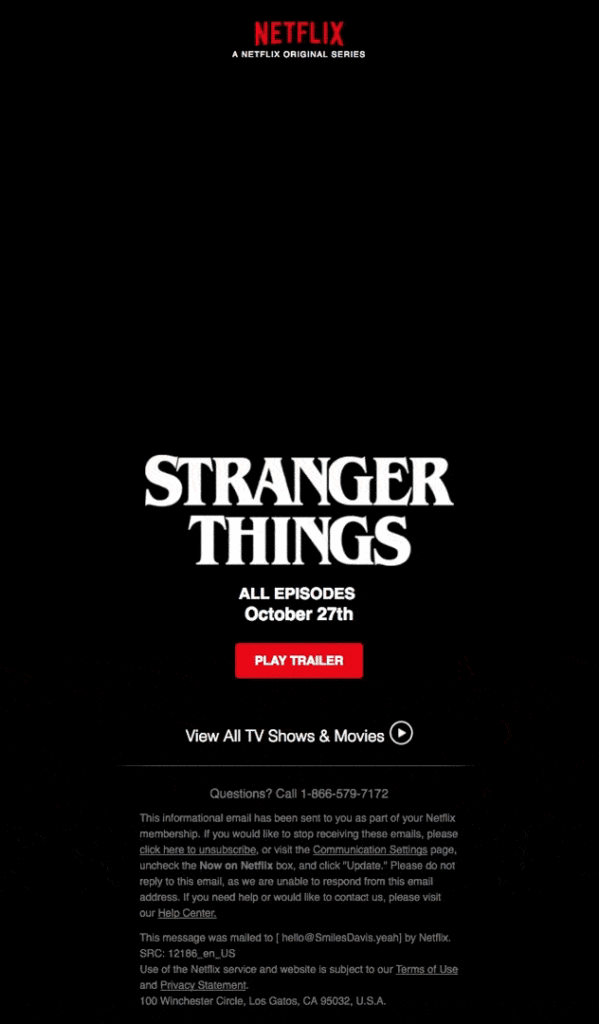
Re-engagement drip campaigns
This is that cluster of drip campaigns that sets in motion a series of re-engagement emails, inviting recipients to return to the site, open an email, click, or in the worst case, communicate that the lack of interaction will inevitably result in unsubscription.
To sum up
Drip campaigns are gold for a brand’s digital strategy. We hope to have given you an idea of their potential in this post. To this we’d like to add that MailUp offers you all the tools to create a drip campaign in just a few simple steps, with the possibility of automating the flow and setting triggers and sending conditions.
If you still haven’t tried MailUp, we suggest requesting a free 30-day trial of the platform.
